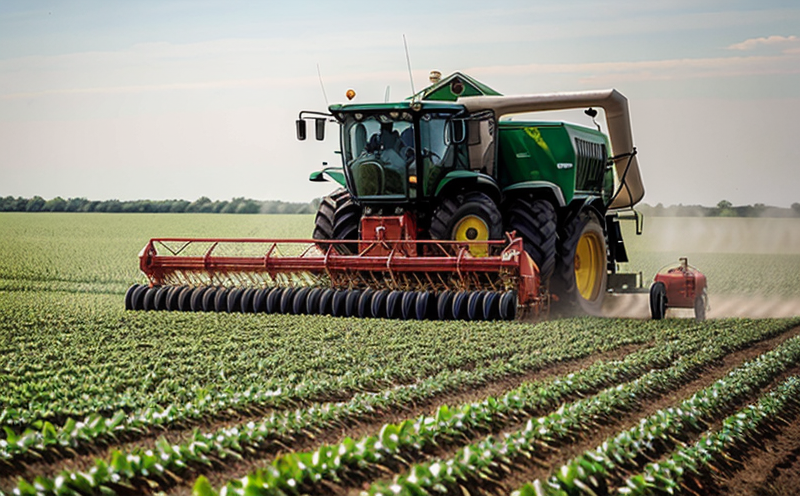Grain Filling Rate Testing
The grain filling rate is a critical parameter in agricultural and forestry testing as it directly impacts crop yield and productivity. Understanding this process helps quality managers, compliance officers, R&D engineers, and procurement teams make informed decisions that can enhance efficiency and profitability.
Grain filling refers to the period during which grains accumulate dry matter through photosynthesis and translocation of assimilates from leaves into developing seeds. The rate at which this occurs is influenced by environmental factors such as temperature, humidity, light intensity, and soil moisture content. Variations in these conditions can lead to significant differences in grain filling rates among different varieties or even within the same variety under varying growing conditions.
Accurate measurement of grain filling rates is essential for several reasons:
- Optimizing Harvest Timing: By monitoring grain fill progression, farmers and agricultural researchers can determine optimal harvest times to maximize yield while minimizing losses due to over-maturity or under-maturity.
- Breeding Programs: Understanding how different environmental stresses affect grain filling allows for the development of more resilient crop varieties capable of maintaining productivity even in adverse conditions.
- Quality Assurance: Knowing the rate at which grains reach their desired stage ensures consistent quality standards across batches and seasons, which is crucial for food safety and market competitiveness.
The accuracy of grain filling rate testing depends heavily on precise measurement techniques. This service employs state-of-the-art equipment to ensure reliability. Instruments used include digital sensors capable of detecting chlorophyll fluorescence intensity, which indirectly measures photosynthetic capacity during the grain filling phase.
For a more detailed look at how this service is conducted, let’s explore its scope and methodology:
Scope and Methodology
| Scope | Description |
|---|---|
| Digital Sensor Technology | The use of digital sensors to measure chlorophyll fluorescence intensity provides a non-invasive way to assess the photosynthetic activity within the grain filling process. |
| Environmental Control | Controlled environmental chambers allow for standardized conditions that replicate various field scenarios, ensuring consistent results across different tests. |
The methodology also includes:
- Initial Specimen Preparation: Grain samples are collected from fields under controlled conditions to ensure they represent typical field conditions accurately.
- Data Collection: Continuous monitoring of chlorophyll fluorescence intensity over time provides comprehensive data on the grain filling rate throughout the process.
- Analysis: Advanced software processes raw data to calculate average rates and identify trends within the sample set.
Quality and Reliability Assurance
The quality of grain filling rate testing is paramount for reliable results. Our laboratory adheres strictly to international standards like ISO, ASTM, EN, IEC, etc., ensuring that all tests meet the highest scientific integrity.
We employ stringent quality control measures throughout every stage of the process:
- Regular calibration and validation of equipment using certified reference materials.
- Detailed documentation of each test procedure and result for traceability purposes.
- Peer review by independent experts to verify methodologies and outcomes.
Use Cases and Application Examples
| Application | Description |
|---|---|
| Breeding Programs | Determining optimal growing conditions for different varieties to enhance yield and resilience. |
| Field Trials | Evaluating the performance of new hybrid strains against established standards in various environmental contexts. |
In practical terms, this service has been instrumental in several key areas:
- Breeding for Drought Tolerance: By identifying which varieties perform best under limited water availability, we assist breeders in creating hardier crops.
- Optimizing Fertilizer Use: Understanding the optimal period of grain filling ensures that nutrients are supplied when they will have the most beneficial effect on yield.
- Pest and Disease Management: Identifying vulnerable stages in the grain filling process helps in developing strategic pest control strategies to protect crops effectively.





